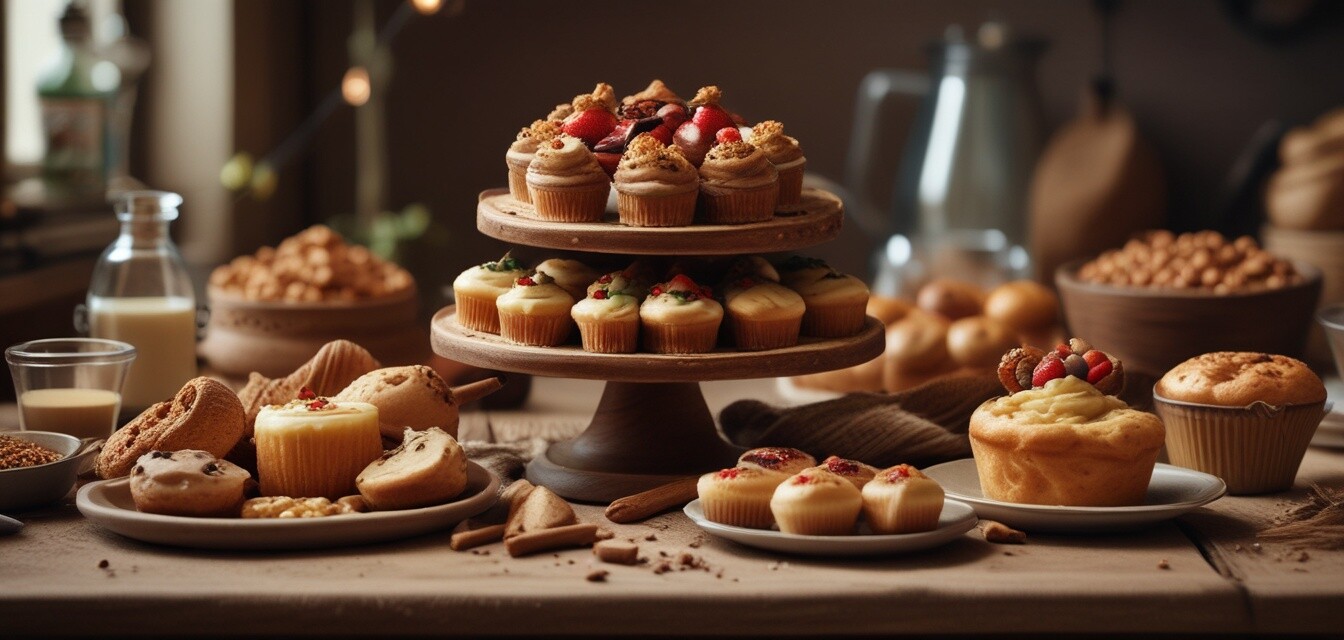
Baking with confidence: Essential techniques
Baking is both an art and a science, requiring precision and creativity to achieve perfect results. Whether you're a novice or a seasoned baker, knowing the essential techniques can elevate your baking game. In this article, we will explore the fundamental skills you need to create delightful baked goods every time.
Key Takeaways
- Understand basic baking techniques for better results.
- Learn the importance of ingredient measurements.
- Master temperature control and baking times.
- Explore the art of decoration and finishing touches.
Getting Started: Essential Baking Techniques
To bake with confidence, it's crucial to grasp the foundational techniques. Below is a summary of these essential skills:
| Technique | Description |
|---|---|
| Measuring Ingredients | Accurate measurements are vital for the success of your baked goods. Use the right tools like measuring cups and kitchen scales. |
| Mixing Methods | Different recipes require specific mixing methods, such as creaming, folding, or whisking. Each method affects the texture of your baked goods. |
| Dough Handling | Understanding how to handle dough properly can result in a better texture and rise in breads and pastries. |
| Baking Techniques | Learn the importance of preheating ovens and positioning racks for even cooking. |
Measurement Matters
Accurate measurements can make or break your baking. Here are some tips for getting it right:
- Use the right measuring tools: Dry measuring cups for solids, liquid measuring cups for liquids, and kitchen scales for precise weights.
- Level off: Always level off dry ingredients with a straight edge for accuracy.
- Room temperature: Ingredients like butter and eggs often perform better at room temperature.
Common Measurement Conversions
| Ingredient | 1 Cup Equivalent |
|---|---|
| All-purpose flour | 120 grams |
| Sugar (granulated) | 200 grams |
| Brown sugar | 220 grams (packed) |
| Butter | 227 grams |
Mixing Techniques
Once you have your ingredients measured, the next step is mixing. Here are some common methods:
Creaming
This technique involves beating butter and sugar together until fluffy. It's often used for cookies and cakes.
Folding
Folding is gentle and preserves the air in mixtures. It's crucial for batters like soufflés or whipped cream.
Whisking
Whisking adds air and is often used in recipes that rely on egg whites or as a step in batter preparation.
Perfecting Your Dough Handling
Understanding how to handle your dough properly can significantly impact texture. Here are key tips:
- Keep your workspace clean and flour-dusted to prevent sticking.
- Work quickly to keep dough from warming; warm dough can lose its structure.
- Let your dough rest to develop flavors and gluten.
Baking Like a Pro
Now that you’ve prepared your dough, it’s time to bake. Consider the following:
- Preheat your oven: Ensure your oven is properly preheated before putting in your baked goods.
- Use an oven thermometer: Verify that your oven temperature matches its settings.
- Watch baking times: Every oven is different; keep an eye on your treats as they bake.
Decorating Your Baked Goods
No bake is complete without a finishing touch! Here are some simple decoration techniques:
- Icing and Glazing: Use powdered sugar, milk, or chocolate to create beautiful finishes.
- Sprinkles and Toppings: Add colorful sprinkles or nuts for visual appeal.
- Fruit and Whipped Cream: Fresh fruit and whipped cream can elevate cakes and pastries.
Conclusion
With these essential baking techniques under your belt, you are now better equipped to create delicious baked goods with confidence. The more you practice, the more you will master these skills. Want to explore more about kitchen utensils that can help streamline your baking endeavors? Check out our Kitchen Gadgets & Tools category.
Pros
- Mastering baking techniques enhances your skills.
- Better results lead to more delicious baked goods.
- Improved confidence in the kitchen encourages more experimentation.
Cons
- Requires time and patience to master techniques.
- Initial learning curve for beginners may be challenging.
For more tips and step-by-step guides on kitchen techniques, visit our Tips and How-To's section!